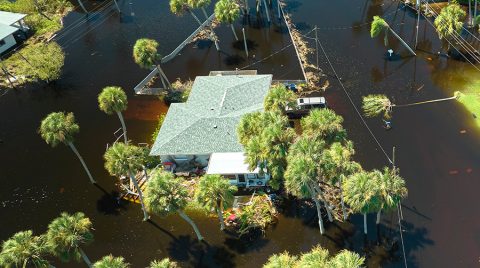-
Schaden & Unfall
Schaden & Unfall ÜberblickRückversicherungslösungenTrending Topic

Schaden & Unfall
Wir bieten eine umfassende Palette von Rückversicherungslösungen verbunden mit der Expertise eines kompetenten Underwritingteams.
-
Leben & Kranken
Leben & Kranken ÜberblickUnsere AngeboteUnderwritingTraining & Events

Leben & Kranken
Wir bieten eine umfassende Palette von Rückversicherungsprodukten und das Fachwissen unseres qualifizierten Rückversicherungsteams.
-
Unsere Expertise
Unsere Expertise ÜberblickUnsere Expertise

Knowledge Center
Unser globales Expertenteam teilt hier sein Wissen zu aktuellen Themen der Versicherungsbranche.
-
Über uns
Über uns ÜberblickCorporate InformationESG bei der Gen Re

Über uns
Die Gen Re unterstützt Versicherungsunternehmen mit maßgeschneiderten Rückversicherungslösungen in den Bereichen Leben & Kranken und Schaden & Unfall.
- Careers Careers
The Impact of Extreme Heat in Workers’ Compensation

17. Dezember 2024
Kimberly Stewart
Region: North America
English
As 2024 winds down and we head into the cold days of winter, the World Meteorological Organization is predicting that 2024 will wind up as the warmest year on record globally.1 The summer of 2024 was the warmest on record in the Northern Hemisphere, averaging 2.74 degrees Fahrenheit above average.2 This is especially concerning because, according to OSHA, heat is the leading cause of death among all weather-related phenomena in the United States.3
The Workers Compensation Research Institute recently released a study finding that excessive heat increases the frequency of injuries both directly and indirectly.4 Direct injuries include heat exhaustion and heat stroke, which can lead to severe injuries including death. Heat indirectly impacts injuries by impairing cognitive ability, reaction time, and workers’ attention which can lead to human error.
Heat-related Injuries
Heat-related injuries could be catastrophic. For example, a 66‑year-old roofer sustained a severe case of heatstroke from working on a roof in 116‑degree heat during the summer in Arizona. As a result, he also sustained an acute kidney injury, myocardial infarction with heart failure, and a hypoxic brain injury. He may likely require 24‑hour attendant care for the remainder of his life.
According to the Bureau of Labor Statistics, 479 workers in the U.S. died from work-related heat exposure from 2011‑2022, and there were 33,890 heat-exposure injuries and illnesses in the same period.5 They believe these figures are underestimated as not all heat-exposure injuries are obvious.
Worksite Standards
Currently, there are no nationwide standards in place to protect workers from the effects of extreme heat. Five states (California, Oregon, Washington, Colorado, and Minnesota) have standards through their state OSHA programs. However, this is likely to change.
On August 30, 2024, OSHA published in the Federal Register of proposed rulemaking “Heat Injury and Illness Prevention in Outdoor and Indoor Work Settings”.6 This proposal requires employers to develop a worksite heat injury and illness prevention plan, identify heat hazards in both indoor and outdoor settings, and implement control measures at both the initial heat trigger of 80° Fahrenheit and the high heat trigger of 90° Fahrenheit. The public comment period is open until December 30, 2024, after which the proposal is expected to be finalized.
Requirements of the Proposed Standard
|
Provision |
All Covered |
At or Above |
At or Above |
|---|---|---|---|
|
Identifying heat hazards |
◼ |
◼ |
◼ |
|
Heat illness and emergency response procedures |
◼ |
◼ |
◼ |
|
Training for employees and supervisors |
◼ |
◼ |
◼ |
|
Heat injury and illness prevention plan (HIIPP) |
◼ |
◼ |
◼ |
|
Recordkeeping |
◼ |
◼ |
◼ |
|
Drinking water |
|
◼ |
◼ |
|
Break area |
|
◼ |
◼ |
|
Indoor work area controls |
|
◼ |
◼ |
|
Acclimatization plan for new or returning workers |
|
◼ |
◼ |
|
Rest breaks (if needed) |
|
◼ |
◼ |
|
Effective communication means with employees |
|
◼ |
◼ |
|
Rest breaks (minimum 15 minutes every 2 hours) |
|
|
◼ |
|
Supervisor or buddy system to observe for signs and symptoms |
|
|
◼ |
|
Hazard alert |
|
|
◼ |
Wearables
In addition to the proposed federal guidelines, other tools are being studied that could help with protecting workers. For example, researchers at Georgia Tech and Emory University are jointly testing a wearable patch that tracks workers’ temperature, heart rate, hydration status, and other important health metrics.7 The patch sends this information to a smartphone app where it can be viewed in real time. Its goal is to quickly identify workers who are at high risk of heat-related illness or injury and take immediate action. This device is currently being tested on landscapers in Florida, with hopes it can be rolled out for more widespread use within three years.
The impact of extreme heat is getting attention within the Workers’ Comp industry.8 Efforts to improve mitigation of this hazard will have a positive impact on both employers and workers.
- “2024 is on track to be the hottest year on record as warming temporarily hits 1.5°C”, World Meteorological Organization, 11 Nov. 2024, https://wmo.int/news/media-centre/2024-track-be-hottest-year-record-warming-temporarily-hits-15degc.
- “Earth had its hottest August in 175‑year record”, National Oceanic and Atmospheric Administration, 12 Sep. 2024, https://www.noaa.gov/news/earth-had-its-hottest-august-in-175-year-record.
- “Heat Injury and Illness Prevention in Outdoor and Indoor Work Settings Rulemaking”, Occupational Safety and Health Administration (OSHA), n.d., https://www.osha.gov/heat-exposure/rulemaking.
- Sebastian Negrusa, Olesya Fomenko, Vennela Thumula, “Impact of Excessive Heat on the Frequency of Work-Related Injuries”, Workers Compensation Research Institute (WCRI), 9 May 2024, https://www.wcrinet.org/reports/impact-of-excessive-heat-on-the-frequency-of-work-related-injuries.
- “Heat Injury and Illness Prevention in Outdoor and Indoor Work Settings Rulemaking”, https://www.osha.gov/heat-exposure/rulemaking.
- Ibid.
- “Real-Time Heat Protection Device Being Tested in Florida”, Georgia Tech, 18 Mar. 2024, https://news.gatech.edu/news/2024/03/18/real-time-heat-protection-device-being-tested-florida.
- Hon. Susan V. Hamilton, “Excessive Heat’s Impact on Workers and Employers”, LexisNexis, 8 Jul. 2024, https://www.lexisnexis.com/community/insights/legal/workers-compensation/b/recent-cases-news-trends-developments/posts/excessive-heat-s-impact-on-workers-and-employers.

